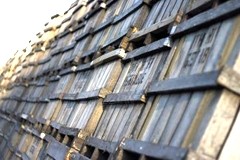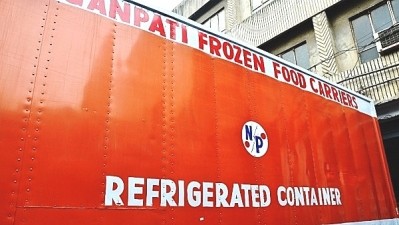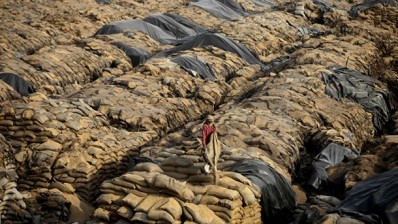Opinion
Entrepreneurs must get backing to fix India’s crumbling supply chain

But there is always that elephant in the room; the one that raises its trunk whenever produce is mentioned in the subcontinent. Nobody likes to talk about India’s crippling storage and supply chain.
Nobody needs reminding how fertile great swathes of land are across the country. The old adage that nobody starved in Mother India might be almost true, at least when you factor in the government’s subsidised grain distribution. But given the amount of produce left to waste in fetid warehouses, with even more tonnes disappearing at the hands of the devious middle men, the situation is unforgivable in most people’s minds.
The day after publishing this story, we received a comment from an entrepreneur who said he had devised a product that could make a significant dent in the amount of disappearing and rotting foodstuffs India endures each harvest.
The comment was clearly promotional, so we rejected it, but the message’s content piqued our interest. How could India’s supply chain mess possibly be solved simply?
“After hearing about the 40% spoilage of fruits and vegetables during a trip to India in late 2008 over and over again, my partner and I began to formulate the idea for an off-the-grid solar-powered cold storage facility,” says Bruce Rubin, partner in Nenko Advisors International, which is based in Philadelphia, Pennsylvania. “We looked deeper into the idea and came up with something we called Rasp—Reduced Agricultural Spoilage Program.
“The unit represents a paradigm shift in our ability to respond to the global need for responsible, affordable and reliable cold chains,” says Rubin. “It is unique in design technology as well as rapidly deployable in the field.”
By this, he means that Rasp incorporates the world’s first free-piston Stirling engine-based solar power generation system, which he says is self-contained and easy to install. It provides a simple and easy to manage temperature control system, and generates efficient, clean AC power.
The entire system, which includes the solar power array, battery storage banks and cold room, can be assembled in just a few days by a small team of semi-skilled, local workers and is then immediately operational with a full three-day battery backup power supply.
“Whether it is set up at the farm, village, processing centre or dock, the unit will return a minimum of 50% of the average crop losses caused by post-harvest handling abuses in emerging areas,” Rubin continues.
“It will also dramatically reduce food safety and security concerns while increasing the availability of nutritional foodstuffs to farmers, women and children. The storage volume of each Rasp unit varies depending on the type of crop, and is scalable to many times that size, if required.”
It sounds pretty impressive, even for the non-engineer, so what is the drawback? It’s currently purely theoretical as Rubin and his partner seek to source cash to build a prototype.
“We have been seeking $1m to build the first demonstration unit in Ogden, Utah, but have been unsuccessful to date,” Rubin laments. “With that million, we could produce a prototype that we can show to all those potential investors who said ‘build it and we will come’.”
So far, Nenko has been turned down by numerous VC firms, angel groups and a number of foundations under Bill Gates, Howard Buffet, George Soros and Wal-Mart.
“They knocked us back for reasons ranging from us being at too early a stage or that we don’t fit their latest agricultural vision, to them not investing in post-harvest loss projects at the present time.”
So once again the elephant stirs in the corner of the room. Everybody wants to find ways to feed the hungry, and admirably so. But in India in particular, where the supply chain is crumbling and so fraught with unnecessary hurdles, the produce that is needed to feed the poor is good and harvested. It is ready for distribution but struggles to meet its consumers in any semblance of efficiency.
We are not advocating Rubin’s invention—we prefer to stay clear of endorsements in our editorial. But we maintain that ideas like this must be looked at seriously. India’s supply chain is fixable once those in charge find the will, and the market finds something that will combine utility with returns.
Have your say: How would you fix the seemingly unfixable and bring greater efficiency to India's storage and supply chain? Let us know in the comments below.

















